Shows by Tom Sgouros
|
These monologues, accompanied by slides, video, sound and lighting effects, and occasional accidents, tell (more or less) true stories about some of the often unexamined parts of the world in which we all live. | Millennium (1996) is concerned with delusions through the ages. Set within a love triangle between a video tape, the narrator and his VCR remote control are stories of tulips worth more than their weight in gold, the police spy who started a revolution in Russia, the rise and fall of the Duke of Arkansas, and others. Interaction between the audience and the video provides some of the show's direction. Also provided as a public service is the best comeback to the smart-aleck who tells you that the Millennium comes in the year 2001, not in 2000. The production of this piece was supported by a grant from the RI State Council on the Arts. (approx. :55 - depends on audience choices) |
|
|||
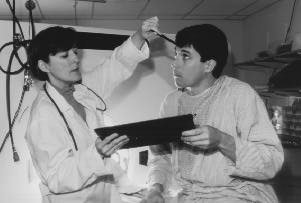
|
Forget It! (1995) is a story about memory, forgetting, the invention of the bathysphere, how brains work, and why you should pick up pennies from the sidewalk. It is structured as a memoir for a dead friend, and concerns the narrator's continuing attempts to ensure that he won't forget his friend. Various side trips are about a forgotten German memory researcher, superstitions and other forms of cultural memory, the importance of memory in politics, and how your brain really keeps all that stuff in there. (1:05) | ||||
|
"wryly funny and often pointed"
Bill Gale, Providence Journal |
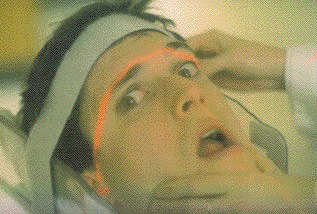
| ||||
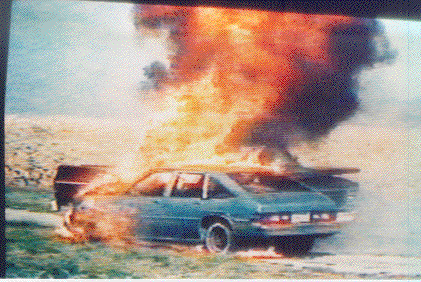
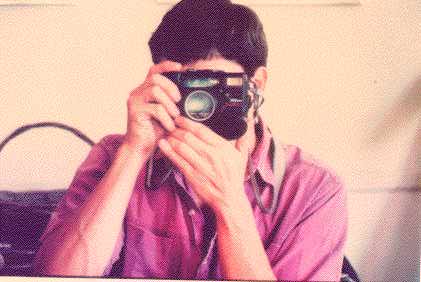
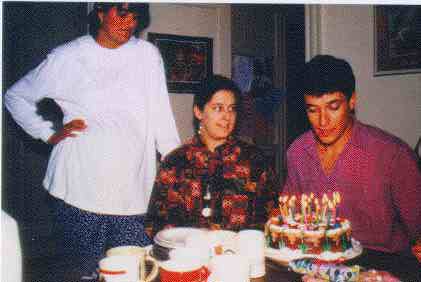
|
Liar: An Evening of True Stories (1993) concerns the lies we all hear,
and tell. Told as a series of three interconnecting stories, the
subject seems to move from life in an ordinary group household to the
saga of the faked exploding pickup trucks on NBC News, and from a
visit to the Oklahoma State Museum of History to René
Descartes's retirement project to a recipe for a good custard. All
along, though, the true subject of Liar is just how (and whether) you
tell when something isn't true. (1:15)
"Sgouros reels in his listeners like a fisherman setting bait: first a tease of what he's doing and then, whonk, he lands them, gasping for air in a completely different universe." Johnette Rodriguez, Providence Phoenix | ||||
|
"Sgouros's solo pieces are imaginative, literate extensions of
a stand-up routine...Sludge and Fish are amusing and
thought-provoking one-acts, offering much more than you might expect from such an unassuming production."
Johnette Rodriguez, Providence Phoenix |
Sludge (1992), a solo dialogue, is about things of value and the value of things. In an extended conversation with a marketing executive tape recorder, the narrator discusses how objects acquire (and lose) value, the 19th century French art academy, the value of good marketing, the meaning of free will, and what sewage sludge, the ultimate waste product, has to do with any of this. (:25) | ||||
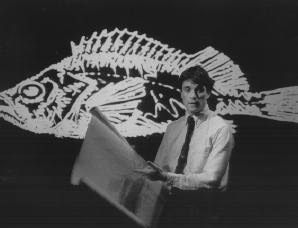
|
Fish (1991) is a show about wetlands and current wetland policy. It is a spoof of a slide talk, where an engineer is presenting a proposal about mitigating wetland destruction to a crowd of land developers. ("Mitigating wetland destruction" is the current jargon for building a swamp to replace another swamp you destroyed.) This proposal is to tear down the Warwick (RI) Mall, and build an | ||||
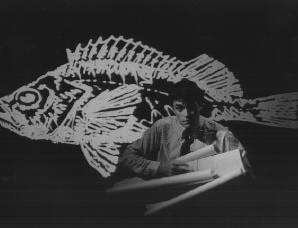
| |||||
| elaborately conceived swamp, complete with raccoon food washing station and a pre-fab beaver dam. Blueprints are presented. The show is also about fish and fishing and individuality, which topics come up through accidents in the slide arrangement and an easily distracted speaker. (:25) | |||||
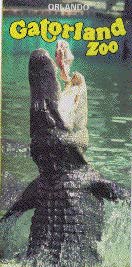
|
Plastic Alligators (1990) is a travelogue about three trips: a canoe trip down the Moshassuck River and Blackstone canal, passing through downtown Providence, Rhode Island; an excursion to the Gatorland Zoo in Kissimmee, Florida; and a visit to Leominster, Massachusetts, where we stop at the National Plastic Museum, speak with the inventor of the pink plastic lawn flamingo, and view the Historical Society's fabulous collection of plastic hair combs. The monologue is a whimsical look at what these trips have in common, which is mainly plastic: polyethylene, styrofoam, fake restaurants, decoy alligators, and plastic experience. This production was supported by a grant from the RI State Council on the Arts. (:40) | ||||
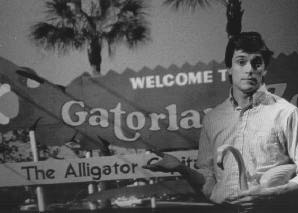
|
|||||
Back to Home --- About the Author (that's me) --- Hi-Res Photo --- Send Mail
